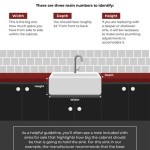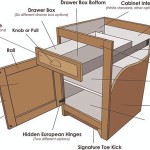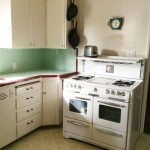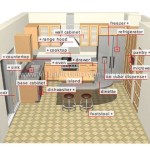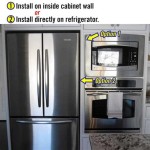Can I Replace Kitchen Cabinet Doors Only?
Kitchen renovations represent a significant investment of time and money. Often, the desire to update a kitchen stems from aesthetic preferences rather than functional deficiencies. In many cases, the existing cabinet boxes remain structurally sound, prompting homeowners to explore more cost-effective alternatives to a complete kitchen overhaul. Replacing kitchen cabinet doors only is a viable option that can dramatically transform the look of a kitchen space without the expense and disruption of replacing the entire cabinetry system. This article examines the feasibility, benefits, potential challenges, and necessary considerations involved in replacing kitchen cabinet doors only.
Assessing the Condition of Existing Cabinet Boxes
Before proceeding with the replacement of cabinet doors, a thorough assessment of the existing cabinet boxes is paramount. The structural integrity of the boxes directly impacts the success and longevity of the project. Examine each cabinet box for signs of damage, including water damage, warping, or structural weaknesses. Water damage often manifests as discoloration, swelling, or mold growth, typically near the sink or dishwasher. Warping can result from prolonged exposure to moisture or uneven weight distribution on the shelves. Structural weaknesses may be evident in sagging shelves, loose joints, or compromised support structures.
If the cabinet boxes exhibit significant damage or structural deficiencies, replacing the doors alone may not a sustainable solution. Addressing underlying issues with the cabinet boxes might become necessary before installing new doors. This could involve repairing damaged sections, reinforcing weak areas, or even replacing severely compromised boxes entirely. Ignoring structural problems can lead to premature failure of the new doors and undermine the overall aesthetic improvement.
Furthermore, consider the alignment and levelness of the cabinet boxes. Misaligned or unleveled boxes can create gaps or uneven spacing between the doors, affecting the aesthetic appeal and functionality. Addressing alignment issues before installing new doors ensures a professional and visually pleasing result. Shimming or adjusting the cabinet boxes may be required to achieve proper alignment.
Benefits of Replacing Cabinet Doors Only
Replacing kitchen cabinet doors only offers several distinct advantages over a complete cabinet replacement. Cost savings are a primary motivator for many homeowners. The cost of replacing cabinet doors is significantly lower than the cost of replacing entire cabinetry systems, as it eliminates the labor and material expenses associated with dismantling and installing new cabinet boxes. The savings can be substantial, allowing homeowners to allocate resources to other kitchen upgrades, such as new countertops, appliances, or flooring.
Reduced disruption is another considerable benefit. Replacing cabinet doors is a less intrusive process than a full kitchen renovation. It minimizes the disruption to daily routines and reduces the amount of time the kitchen is out of commission. The installation process is typically less time-consuming and generates less dust and debris compared to a full cabinet replacement.
Aesthetic improvement is a key driver for many homeowners. Replacing cabinet doors provides an opportunity to dramatically transform the look of a kitchen without altering the existing layout or footprint. Homeowners can choose from a wide range of door styles, materials, and finishes to achieve their desired aesthetic. This allows for customization and personalization of the kitchen space without the complexity and expense of a complete renovation.
Environmental considerations also play a role. Replacing cabinet doors is a more sustainable option than replacing the entire cabinetry system. It reduces waste by preserving the existing cabinet boxes, which often contain significant amounts of wood and other materials. By reusing the existing boxes, homeowners contribute to a more environmentally responsible approach to kitchen remodeling.
Considerations When Choosing New Cabinet Doors
Selecting the appropriate cabinet doors is crucial for achieving the desired aesthetic and ensuring a seamless fit with the existing cabinet boxes. Several factors merit careful consideration, including door style, material, finish, and hardware.
Door style significantly influences the overall look of the kitchen. Common door styles include shaker, raised panel, flat panel, and slab. Shaker doors are characterized by their clean lines and recessed center panel, offering a timeless and versatile aesthetic. Raised panel doors feature a raised center panel, adding depth and visual interest. Flat panel doors have a simple, minimalist design, ideal for modern or contemporary kitchens. Slab doors are completely flat and unadorned, providing a sleek and streamlined appearance.
Material selection impacts both the aesthetic and durability of the cabinet doors. Common materials include solid wood, wood veneer, medium-density fiberboard (MDF), and thermofoil. Solid wood doors offer a natural and luxurious look, but they can be more expensive and require careful maintenance. Wood veneer doors consist of a thin layer of real wood applied to a substrate, providing a similar aesthetic to solid wood at a lower cost. MDF doors are a cost-effective and durable option, resistant to warping and cracking. Thermofoil doors are made by heat-sealing a vinyl laminate to an MDF core, offering a wide range of colors and finishes.
The finish of the cabinet doors contributes significantly to the overall aesthetic. Common finishes include paint, stain, and laminate. Painted doors offer a wide range of color options and can be easily updated to reflect changing trends. Stained doors highlight the natural grain of the wood, providing a warm and inviting look. Laminate doors offer a durable and low-maintenance finish, available in a variety of colors and patterns.
Hardware selection, including knobs, pulls, and hinges, completes the look of the cabinet doors. The hardware should complement the door style, material, and finish, and it should be functional and comfortable to use. Consider the size, shape, and finish of the hardware to achieve a cohesive and visually appealing design.
Measuring for Replacement Cabinet Doors
Accurate measurements are essential for ensuring a proper fit of the new cabinet doors. Precise measurements minimize the risk of errors and ensure that the doors align correctly with the cabinet boxes. Measure each door individually, as slight variations may exist between different cabinets. Use a metal measuring tape for accuracy and record the measurements in millimeters or inches, depending on the manufacturer's specifications.
Measure the height and width of each door, taking the measurements from the inside edges of the door frame. For overlay doors, which cover part of the cabinet frame, measure the amount of overlap on each side. This overlap measurement is critical for ensuring that the new doors fit properly and conceal the cabinet frame as intended.
Determine the hinge placement on the existing doors and record the location of the hinge bores. This information is necessary for ordering new doors with pre-drilled hinge bores that match the existing hardware. Mismatched hinge bores can create alignment issues and require additional drilling, which can compromise the integrity of the doors.
If you are unsure about the measuring process, it is advisable to consult with a professional cabinet maker or installer. They can provide accurate measurements and ensure that the new doors fit perfectly with the existing cabinet boxes.
Installation of New Cabinet Doors
The installation process is typically straightforward, but it requires patience and attention to detail. Begin by removing the existing cabinet doors, carefully unscrewing the hinges and setting the doors aside. Inspect the cabinet frames for any damage or debris and clean the surfaces thoroughly.
Install the new hinges on the new cabinet doors, ensuring that they are aligned correctly and securely fastened. Align the new doors with the cabinet frames and attach the hinges to the cabinet frames, using the existing hinge screw holes whenever possible. Adjust the hinges as needed to ensure that the doors are properly aligned and swing smoothly.
Install the knobs or pulls according to the manufacturer's instructions. Ensure that the hardware is securely fastened and that the screws are not overtightened, as this can damage the doors. Test the doors to ensure that they open and close smoothly and that the hardware is properly aligned.
If you are unfamiliar with cabinet installation, it is advisable to hire a professional installer. They have the experience and expertise to ensure that the doors are installed correctly and that any potential issues are addressed promptly.
Potential Challenges and Solutions
While replacing cabinet doors is generally a straightforward process, certain challenges can arise. These challenges may include difficulty matching existing cabinet finishes, issues with door alignment, and unexpected structural problems with the cabinet boxes.
Matching existing cabinet finishes can be challenging, particularly if the cabinets are older or have been exposed to sunlight or other environmental factors. Color variations can occur over time, making it difficult to achieve a perfect match. To minimize this issue, obtain samples of the new door finishes and compare them to the existing cabinet boxes under different lighting conditions. Consult with a paint specialist to find a color that closely matches the existing finish. If a perfect match is not possible, consider painting or staining all the cabinet boxes to create a uniform look.
Door alignment issues can occur if the cabinet boxes are not perfectly square or if the hinge placement is incorrect. To address alignment issues, adjust the hinges as needed to achieve proper alignment. Use shims behind the hinges to adjust the door's position slightly. If the cabinet boxes are significantly out of square, consider adjusting or replacing the cabinet boxes before installing the new doors.
Unexpected structural problems with the cabinet boxes can arise during the door replacement process. Hidden water damage, termite infestations, or structural weaknesses may be uncovered when the existing doors are removed. Address these issues promptly to prevent further damage and ensure the structural integrity of the cabinets. Repair or replace damaged sections of the cabinet boxes as needed.

Reface Or Replace Your Kitchen Units Dream Doors

Can I Just Replace The Doors On My Cabinets Redo

How Much Are Replacement Kitchen Doors Guide 2024

Cabinet Door Replacement N Hance Wood Refinishing Of Low Country

Reface Or Replace Your Kitchen Units Dream Doors

Can You Replace Kitchen Cabinet Doors Only Know This First

Can You Replace Just The Cabinet Doors Now

Can You Replace Just The Cabinet Doors Now

Kitchen Cabinet Doors The Replacement Door Company

How Much Does It Cost To Replace Kitchen Cabinet Doors

